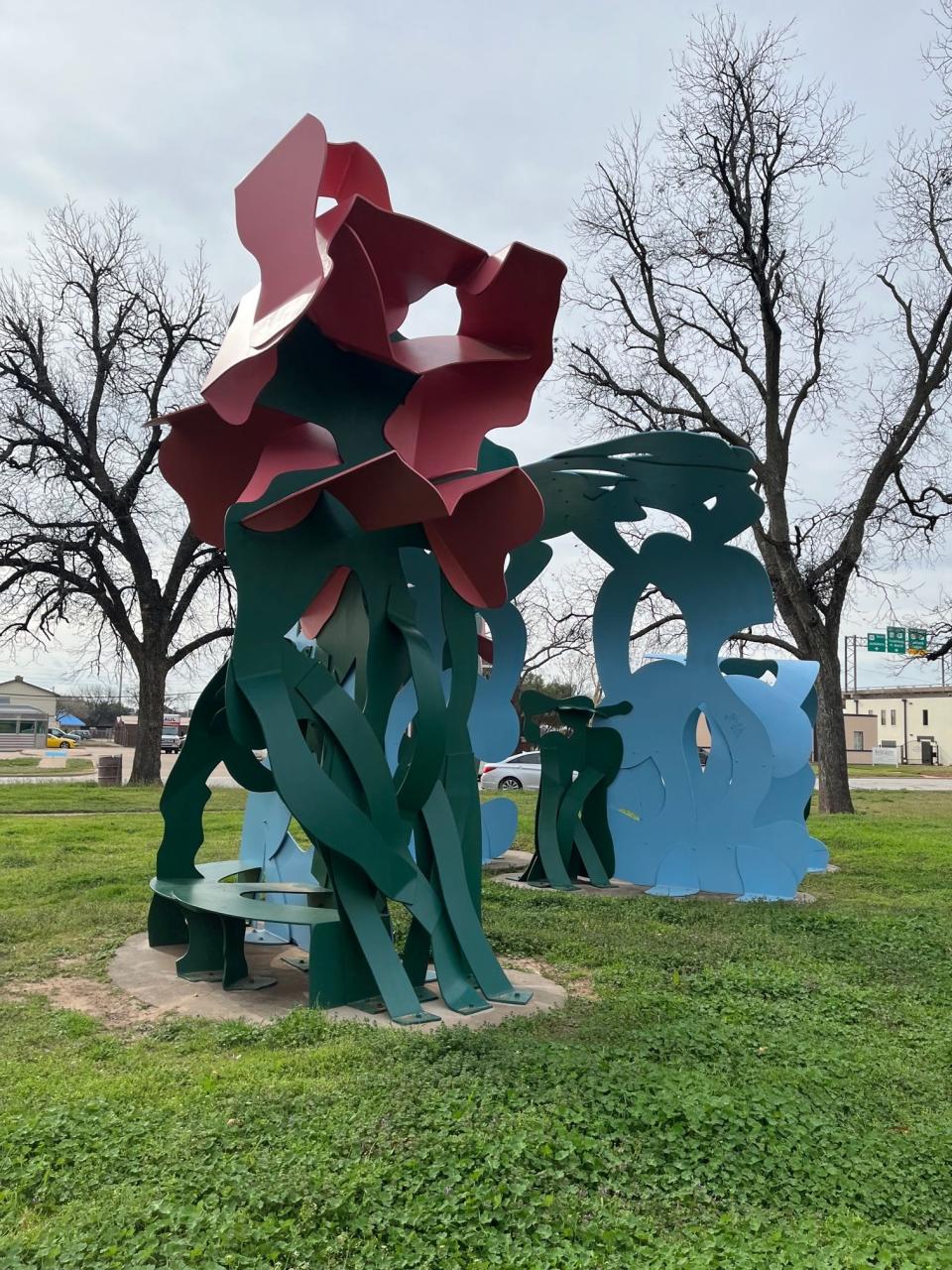Debate bloomed over this art piece in the park 40 years ago
- Oops!Something went wrong.Please try again later.
Forty years ago it was a lightning rod of controversy in Wichita Falls – an object of admiration or derision.

The dust has long settled and today it sits quietly in a city park that attracts few visitors.
A traveler who happens to exit the Lloyd Ruby overpass might catch a glimpse of it and say, “What is that?”
It’s a crape myrtle. Or at least one artist’s notion of a crape myrtle (a little farther south it’s spelled is crepe).
To understand why the multi-colored, twisting aluminum sculpture came to reside in Harold Jones Park (Bellevue park at the time), it’s necessary to turn back the clock four decades. Two things were happening in Wichita Falls in the early 80s. The city was preparing for its 100th birthday and it was recovering from the tornado of 1979 which devastated a large part of the city.
City and civic leaders decided a good symbol for the city would be the crape myrtle, a flowering shrub known for its rugged endurance. The plant had been symbolically connected to Wichita Falls since at least the 1940s when ladies of the Garden Club embarked on a campaign to make the town “Crape Myrtle City.” The Chamber of Commerce gave away hundreds of crape myrtle plants. Local bankers decided to do the same thing as the centennial approached.
In May 1982, the Wichita Falls Arts Commission hired New York sculptor George Sugarman to create a 30-by-17-by-15 foot aluminum sculpture to be delivered in time for the official centennial. The cost was $100,000 to be split between the city’s hotel tax fund and a grant from the National Endowment for the arts. That's $312,000 in today's dollars.
Sugarman accompanied his work as it was trucked to the city.
Reaction was swift after the unveiling. Even the mayor at the time, Kenneth Hill, grumbled the money should “spent on something other than just a piece of metal.”
In an age before social media, the sculpture elicited an outpouring of letters to the editor and the Times and the Record News.
One writer said of Sugarman, “it appears he is a better salesman than artist.”
“This is not Greenwich Village and it’s not modern art territory,” another wrote.
Sugarman wasn’t surprised by the reaction.
“If everyone likes it, there’s something wrong,” he said during a visit to Wichita Falls.
The sculpture has had its supporters, too – then and now.
“It’s an underrated sculpture that gets too much hate,” said Ann Arnold-Ogden, expressing her personal opinion of the misunderstood artwork. She said she sees herself as the “self-designated protector” of the piece.
Arnold-Ogden is the executive director of the Wichita Falls Alliance for Arts and Culture but said since she joined the Alliance in 2017, there have not been any discussions about doing anything with the piece or dedicating any funds toward it.
She said the works of Sugarman, who died in 1999, have grown in popularity over the years.
“He was a controversial artist in his time,” she said, but noted his work has been displayed in the Museum of Modern Art and most major museums around the world.
“It’s unreal to have a piece of work of this caliber in our community,” she said. “I’m not going to change anyone’s deep-seated opinions on this piece. If they hate it, they hate it."
If you are into Geocaching, there is a hidden object near the art piece in a "black magnetic box, about the size of a deck of cards."
This article originally appeared on Wichita Falls Times Record News: Debate bloomed decades ago over this art piece in a Wichita Falls park

